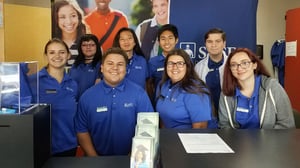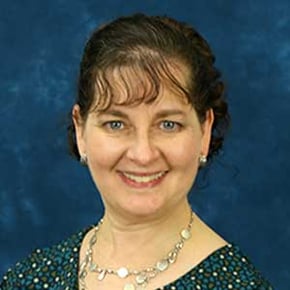It’s one thing to teach students financial literacy by showing them how to balance a checkbook and explain how interest rates work. But it’s quite another to have high school students obtain hands-on experience working with their own finances – and helping peers with theirs.
Providing quality, effective financial awareness opportunities is the philosophy behind SAFE Credit Union’s branches at Greater Sacramento-area high schools. Students staff the branches, helping their peers open and maintain checking and savings accounts. They also spread the word about the importance of saving and tips on how to help those savings grow.
While the students who work in the branches receive valuable job skills experience, their peers take the first steps toward financial responsibility and independence, says Heather Paul, the SAFE Sunrise branch manager who oversees the program at Mesa Verde High School. Rio Linda High School also hosts a SAFE branch.
The program provides teens with opportunities to learn job skills, banking principles, and adult-level responsibility. Participants start with a two-week summer internship at SAFE headquarters in Folsom, where they learn about all the credit union’s departments, from deposits and loans, to customer service and marketing. When school starts, they receive further guidance from SAFE branch employees on the basics of opening accounts, deposits, withdrawals, and customer service.
For Heather, her favorite part of the program is “seeing the students from the first day to the last day, to see their confidence grow. They start off needing help on how to fill out deposit slips and withdrawal slips. By the end of the year they’re doing much of the work themselves.”
The students take their work with the SAFE branch seriously, Heather said. They dress appropriately and act professional. By the end of the program, they know how to handle themselves in a business setting. Some may even decide to go into banking later. Heather said a former student who went through the program now works as a teller in her branch.
Student members who bank with SAFE on campus also benefit from the arrangement. “The biggest thing for them is independence,” Heather said. “They can have their own account. They learn how to use a debit card, save money, or add on to a CD. It’s another step toward adulthood.”
SAFE’s partnership with the high schools where it hosts branches goes beyond an ATM and service desk on site. SAFE employees also provide financial literacy lessons to students.
The students at Mesa Verde have special reason to be proud this year. They worked diligently for nine months
toward what in the beginning seemed a daunting goal: open 28 savings accounts and 22 checking accounts. Keep in mind that the branch is only open during a half-hour lunch break three days a week, and you can understand the challenge these sophomores and juniors faced.
The morning of May 4, the last day the branch was open for the school year, they had almost reached their goal: 27 savings accounts and 28 checking accounts. During lunch on that day, a student came in and opened a savings account, nailing the branch’s goal and sending the team into cheers.
This summer, another group of students is participating in the internship program. They too will learn about SAFE Credit Union, and will provide service to their fellow students when the school year starts in August.
The SAFE high school program is part of SAFE’s efforts to improve our community through financial education and direct philanthropy. In 2017, SAFE donated $300,000 to organizations that benefit education, improve health, and serve military personnel and veterans. Also last year, SAFE employees and board members volunteered more than 11,000 hours to area organizations.


